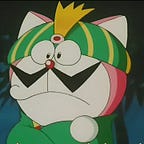The Economy
The economy. In dire times understanding the foundational concepts can aid in navigation. Understanding that the economy has done this before, the economy will do this again, and it is just a scene in the play that will be repeated thousands of times.
The following article outlines the basic concepts of the economy; heavily influenced and substantiated by Ray Dalio’s thought and presentation How The Economic Machine Works.
The economy acts mechanically and is a simple machine. It has three central drivers:
- Productivity Growth
- Short Term Debt Cycle
- Long Term Debt Cycle
Defining the economy. An economy is the sum of the transactions that make it up. The transaction is the basic building block of the economic machine. A transaction consists of a buyer exchanging money or credit with a seller for goods, services, or financial assets. People, businesses, banks, and governments all engage in transactions, with the government being the biggest buyer and seller.
Credit is the most important part of the economy, being the largest and most volatile constituent. Credit creates cycles and drives economic growth. It allows people to buy things they cannot afford and involves lenders and borrowers. Credit is, at the same time, an asset and a liability; an asset for the lender and a liability for the borrower. It can be used in two ways; productively and unproductively. Productive use of credit is allocating resources efficiently and producing income. Bad use of credit is financing over consumption that cannot be paid back.
Spending drives the entire economy, as one person’s spending is another person’s income. Increased income allows increased borrowing, allowing increased spending, and as one man’s spending is another man’s income, this self-reinforcing pattern leads to economic growth.
Credit remains the most powerful short-term driver, and productivity matters most in the long run. Debt centrally allows people to consume more than they produce, but it does necessitate a point in the future where they must consume less than they produce in order to repay it. Borrowing pulls spending forwards, and this is what creates cycles.
The Short Term Debt Cycle
The Expansion: Spending increases and prices rise, fueled by credit. When spending growth outpaces the production of goods, it leads to inflation.
The Recession. Central banks reduce the availability of credit by raising interest rates and making borrowing more expensive. This causes spending to slow, economic activity decreases, and there is a recession.
The Reversal. The central bank lowers interest rates to stimulate economic growth, leading to more spending, higher incomes, more borrowing, and economic expansion.
This cycle lasts approximately five to eight years and is primarily governed by the central bank and its policies.
The Long Term Debt Cycle
The Boom. Assets go up, incomes increase, and all of this is purchased with credit.
The Bust. Debts rise faster than incomes- understood as the debt burden (the ratio of debt to income)- and people stop spending, borrowing decreases, and the cycle reverses.
This process takes place over decades and leads to a deleveraging, the 2008 Financial Crisis is a prime example. People stop spending, incomes fall, credit dries up, asset prices drop, banks get squeezed, stock market crashes, and social tensions rise. In a deleveraging the debt burdens have grown too large, and even the central bank cannot help by lowering interest rates. This debt must be reduced.
Reducing Debt
- Cut Spending
- Reduce Debts
- Redistribute Wealth
- Print Money
The first three of these methods are deflationary. Spending cuts increase the debt burden as incomes fall, businesses cut costs, unemployment rises, and there is less overall spending, meaning debt outpaces income growth. Reducing debts is when borrowers cannot repay lenders, and people begin to default, when lenders default the credit, which is both an asset and a liability, becomes a worthless asset. Debts are reduced or restructured. Redistributing wealth sees the government raising taxes on the wealthy so that it can increase its spending. This causes social unrest as the wealthy despise the poor, and the poor despise the wealthy.
The final method is inflationary and stimulative. Central banks create money to buy financial assets and government bonds. However, the central bank must work with the central government, as the bank can only buy assets it only helps those who own assets. The government, on the other hand can purchase goods and services to stimulate the economy. The central bank prints money out of thin air, buys government bonds and allows the government to run a deficit- spending more money than it produces in tax revenue.
These four methods must be applied prudently, and if done well, the central bank can replace the lost credit with money, and the economy continues to grow. The most important feature of the economy is that income growth must outpace the rate of interest on the accumulating debt.
If too much money is printed it causes high inflation. This is the scenario observable in the modern world, and as a result, central banks all over the world continue to raise interest rates, making borrowing more expensive, reducing spending, and leading to economic contraction.
One hopes that these measures are sufficient. Inflation defines itself as an increase in the money supply not supported by economic growth. The Federal Reserve printed trillions of dollars during the pandemic when economic growth had slumped, and now the taxpayer will pay the price.
Inflation has dire consequences not only for the standard of living for lower-income groups of society but in the grander scheme of democracy. Hyperinflation has always preceded extreme changes in government, a classic example being Germany in the 1930s. The economy is a mechanical creature; inputs have outputs. The prioritisation of stability leads to harsher future consequences.
The economy works in cycles, and even though the current is painful, it will again be replaced with economic prosperity.
